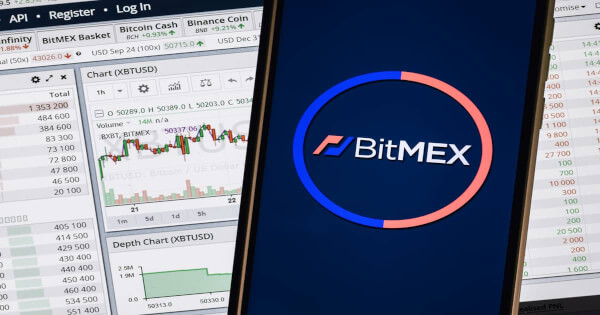In a recent development, the Stellar Foundation has announced that a major financial institution is onboarding its platform. The onboarding is meant to be a significant intersection between traditional finance (TradFi) and blockchain technology. Additionally, the Soroban Network, which is part of the Foundation, is stepping up to the plate and challenging established players.
– Read Stellar (XLM) Price Prediction 2023-24
The Frank Templeton Stellar Foundation collaboration
In April, the Stellar Foundation shared some exciting news – Franklin Templeton’s OnChain U.S. Government Money Fund was integrated into the Stellar network via the Benji Investments app. This announcement was noteworthy because Templeton became the first U.S.-registered mutual fund to adopt public blockchain technology for transactions and share ownership via the Stellar blockchain.
The fund’s transfer agent maintains the official record of share ownership by utilizing a proprietary system that integrates blockchain technology and currently leverages the Stellar blockchain network for all transaction activity.
The Tokenization feature from Stellar Foundation
Denelle Dixon, CEO and Executive Director of the Stellar Development Foundation, revealed that the Foundation’s network is intentionally designed and fine-tuned for asset tokenization. The Franklin OnChain U.S. Government Money Fund is a prime example of the blockchain’s practicality, he said. Dixon also emphasized that the Stellar Foundation is committed to revolutionizing traditional financial products and processes, increasing market accessibility, and empowering a wider population.
The innovative investment strategy introduced by the Franklin OnChain U.S. Government Money Fund is represented by a single BENJI token. The token enables holders to gain exposure to the fund via the mobile Benji Investments app. The Stellar Development Foundation recognizes the value and potential of these tokens as they play a crucial role in the expanding digital ecosystem.
Despite being a traditional financial institution, the ability to tokenize assets, facilitated by the Stellar Foundation, has enabled Templeton to connect the worlds of traditional finance and decentralized finance.
Additionally, through the Soroban Network, Stellar strives to establish itself as a reliable and robust smart contract platform in competition with Ethereum and Solana.
Soroban vs. Ethereum vs. Solana
Soroban, developed by the Stellar Foundation, has some distinct features that differentiate it from Ethereum and Solana. Ethereum utilizes the Ethereum Virtual Machine (EVM) runtime environment and the Solidity programming language to build contracts. At the same time, Soroban uses the WebAssembly (WASM) runtime environment and supports a wider range of languages. Programming languages such as Rust, C, C++, Go, and AssemblyScript are some of the supported languages. Moreover, the smart contract is not limited to mainstream stablecoins like USDC, but also encompass stablecoins denominated by other fiats.
Regarding Solana, both Soroban and Solana boast high transaction rates per second. However, the Stellar network has only experienced one network outage since its inception, contrary to the several outages Solana faced.
Stellar’s TVL plummets
An analysis of Stellar’s Total Value Locked (TVL) as per DefiLlama seems to indicate a decline in the value over the years. In fact, as of December 2021, the TVL was recorded at over $70 million. However, throughout 2022, a significant decrease in value was observed. At press time, the TVL stood at just $19 million.
Worth noting, however, that there has been evidence of an upward trend in the value locked in recent times. The same was evidenced by Stellar’s charts too.
XLM stirs, but is stuck in a bearish trend
As far as price movement is concerned, the native token of the Stellar Foundation ecosystem – XLM – initially appeared to depreciate significantly on the charts. However, a closer daily timeframe chart analysis revealed a different story.
Before January 6, the token was trading at around $0.06. However, it began to exhibit an upward trend from that point. And despite experiencing some highs and lows, it gained by over 55% before its subsequent decline that commenced after March 31.
Nevertheless, from March 31 to present day, it has only lost approximately 13% of its value. At the time of writing, XLM was trading at around $0.09 on the charts.
Source: TradingView
That’s not all either as on April 19, XLM recorded a decline in value of over 7%, which caused it to fall below the neutral line on the Relative Strength Index (RSI).
At the time of writing, the RSI line was above 40 too, indicating a strong bearish trend for XLM. Additionally, the volume metric on Santiment revealed that XLM has been experiencing low trading volume, with the same noting a figure of 41 million – Significantly lower than >200 million recorded in March.

Source: Santiment
– How much are 1,10,100 XLMs worth today
The ability of the Stellar Foundation to integrate a major financial institution into the Stellar network highlights the growing intersection between traditional finance and blockchain technology. Stellar’s asset tokenization capabilities have enabled institutions like Franklin Templeton to connect traditional and decentralized finance worlds. The Soroban Network is also competing with established players like Ethereum and Solana in decentralized applications.
Credit: Source link




![6 Best New Meme Coins to Join in December 2024 [Unlock Massive Returns with BTFD Coin’s Festive Discount]](https://blockchainreporter.net/wp-content/uploads/2024/12/btfd453656476754.png)










































